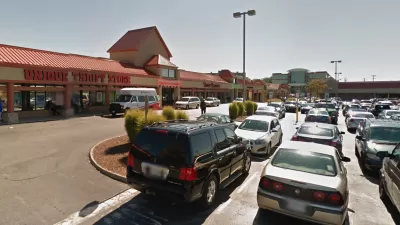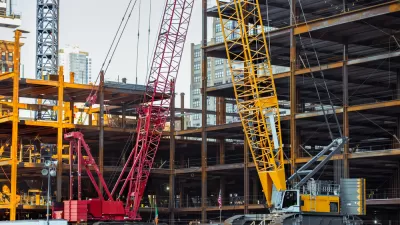Two organizations representing the development industry have released a report to highlight the costs of doing business.

"Regulation imposed by all levels of government (whether local, state or federal) accounts for 32.1 percent of the cost of an average multifamily development, according to a new study conducted jointly by the National Association of Home Builders (NAHB) and the National Multifamily Housing Council (NMHC)," according to an article on the NAHB's website.
According to the article, the report used a survey of multi-family developers from both organizations to build its conclusions. Over 90 percent of surveyed multi-family developers reported incurring hard costs during the approval processes. The article includes a graph breaking down the kinds of regulations that add costs to multi-family development.
Obviously, given the purpose of these two organizations in representing the interests of the construction and development industry, the findings should be considered with the proper frame. As noted on the website where the full report can be found, however, the only way to collect data on the costs of regulations is to survey developers.
The question of whether reductions in regulatory costs would be for public or private benefit remains.
FULL STORY: Regulation: Over 30 Percent of the Cost of a Multifamily Development

Planetizen Federal Action Tracker
A weekly monitor of how Trump’s orders and actions are impacting planners and planning in America.

Chicago’s Ghost Rails
Just beneath the surface of the modern city lie the remnants of its expansive early 20th-century streetcar system.

San Antonio and Austin are Fusing Into one Massive Megaregion
The region spanning the two central Texas cities is growing fast, posing challenges for local infrastructure and water supplies.

Since Zion's Shuttles Went Electric “The Smog is Gone”
Visitors to Zion National Park can enjoy the canyon via the nation’s first fully electric park shuttle system.

Trump Distributing DOT Safety Funds at 1/10 Rate of Biden
Funds for Safe Streets and other transportation safety and equity programs are being held up by administrative reviews and conflicts with the Trump administration’s priorities.

German Cities Subsidize Taxis for Women Amid Wave of Violence
Free or low-cost taxi rides can help women navigate cities more safely, but critics say the programs don't address the root causes of violence against women.
Urban Design for Planners 1: Software Tools
This six-course series explores essential urban design concepts using open source software and equips planners with the tools they need to participate fully in the urban design process.
Planning for Universal Design
Learn the tools for implementing Universal Design in planning regulations.
planning NEXT
Appalachian Highlands Housing Partners
Mpact (founded as Rail~Volution)
City of Camden Redevelopment Agency
City of Astoria
City of Portland
City of Laramie





























